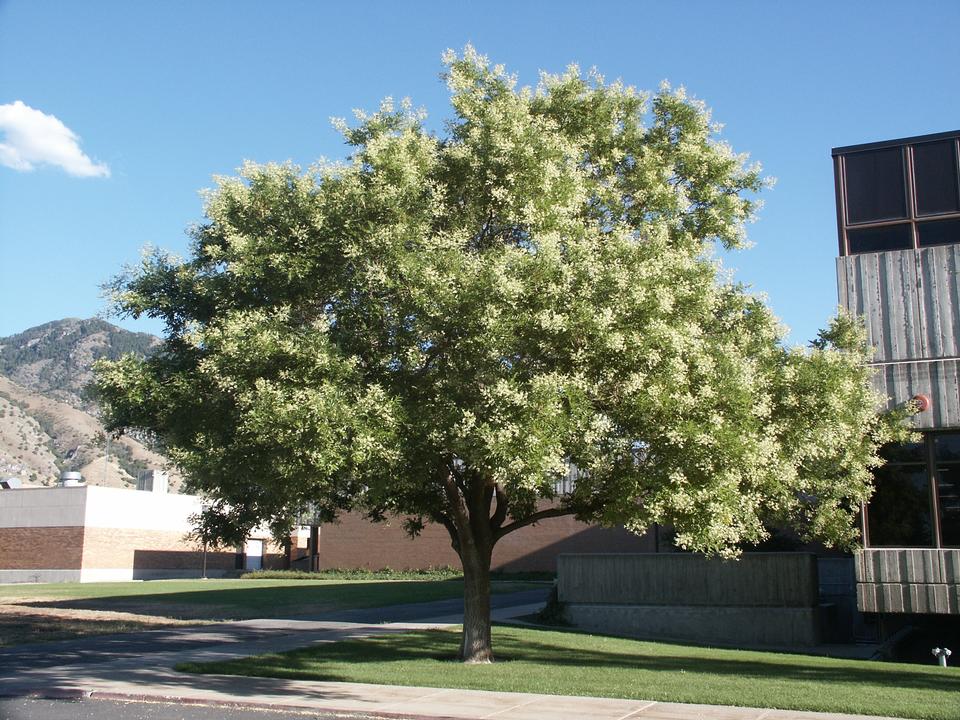Pagodatree, Japanese or Scholar-tree
Sophora japonica
Fabaceae - Legume
Description
Leaves: Alternate; once pinnately compound; 6" to 10" long; deciduous; 7 to 17 ovate to ovate-lanceolate leaflets, 1" to 2" long, entire margins, rounded at base, bright green and lustrous above, somewhat waxy to hairy beneath.
Twigs/buds: Twigs slender; glabrous; green on twigs up to 4 to 5 years old; pith solid, greenish. No terminal bud; lateral buds blackish, hidden by leaf scar or by base of rachis when leaves are attached.
Flowers/fruit: Flowers perfect, creamy-white, showy, pea-like; bloom in July or August; borne in large, loose bunches; very attractive. Fruit a yellow-brown legume; 3" to 8" long; containing 3-6 brown seeds.
Bark: Similar to black locust except gray-brown.
Wood: No information available.
General: Native to China and Korea. Prefers rich, moist, well-drained soils. Shade intolerant. Fruit can be a nuisance; use fruitless varieties if possible.
Landscape Use: My opinion of this tree has changed. I had felt it was a good tree that should be planted more, but now I think it is not so good. Flowers are very attractive, but I have seen trees doing well, growing quickly, then dying quickly from what appears to be a canker. New growth often droops and looks awkward. Included bark is common. Dr. Frank Santamour of the U.S. National Arboretum has proposed after some genetic studies that the name of this species be changed to Styphnolobium japonicum. Zones 4-8.
Cultivars: 'Columnaris', 'Pendula', 'Princeton Upright', 'Regent', 'Variegata'.
Characteristics
General
| Family | Fabaceae - Legume |
|---|---|
| Cultivar Availability | Yes |
| Hardiness Zone | 4-8 |
| Type | Broadleaf |
| Utah Native | No |
Growth
| Growth Rate | Medium |
|---|---|
| Mature Height | Medium |
| Longevity | High |
| Is Good Under Power Lines | No |
| Crown Shapes | Rounded |
Ornamental
| Bark | No |
|---|---|
| Fall Color | Yes |
| Flowers | Yes |
| Foliage | No |
| Fruit | No |
Tolerance
| Shade | Low |
|---|---|
| Salt | Medium |
| Drought | Medium |
| Poor Drainage | Medium |
| Alkalinity | High |
| Transplanting | Medium |










